Poznan in Poland is a city with an amazingly beautiful square. We almost dropped our jaws when we got there and said to each other that this must be the most beautiful square we have ever seen. Apart from the square, there are of course a lot of other things to see and do, and today we are sharing our best tips.
Innehållsförteckning
Poznan in Poland
Poznan is Poland's fifth largest city and offers a beautiful old town with colourful and decorated houses. The city is famous for the two bucks that appear on top of the Town Hall clock when the clock strikes 12:00, and for its St Martin croissants.
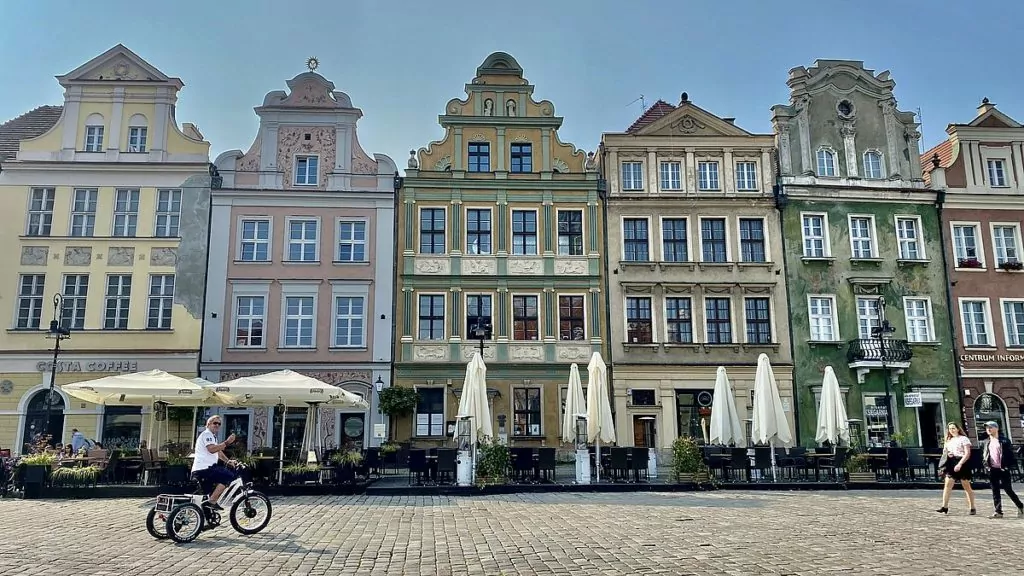
Poznan is located on the river Warta in western Poland, about 27 miles west of the capital city of Warsaw.
1. Stroll around the old square
When you arrive in Poznan, you will quickly notice the beautiful square. Built in the 13th century, the large, square-shaped square is home to a number of stunning buildings.
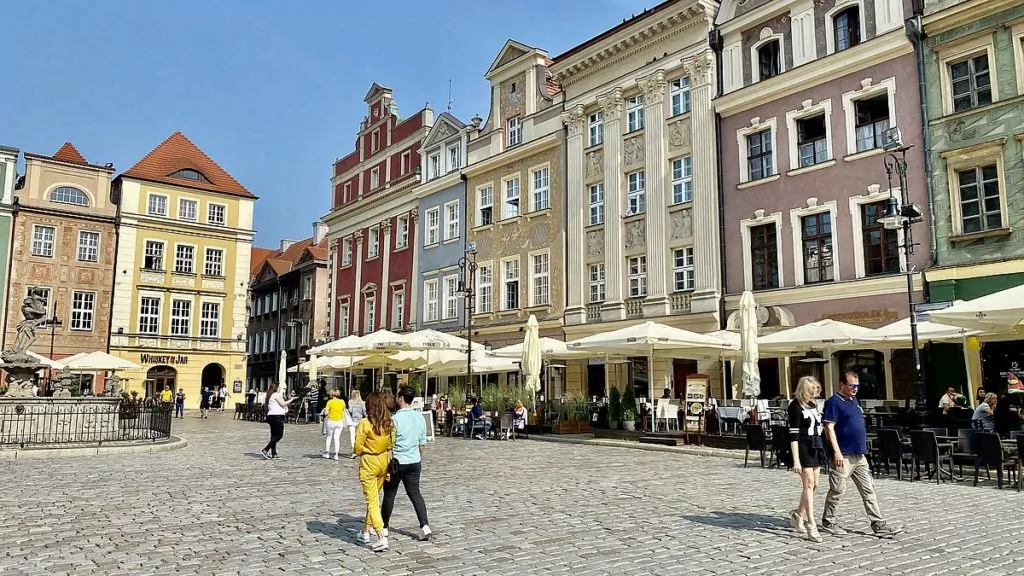
Many of the buildings were unfortunately destroyed during World War II, but were quickly rebuilt to their former glory. By far the most impressive is the beautiful Town Hall (point 2), but pretty much all the buildings are worth taking a look at.
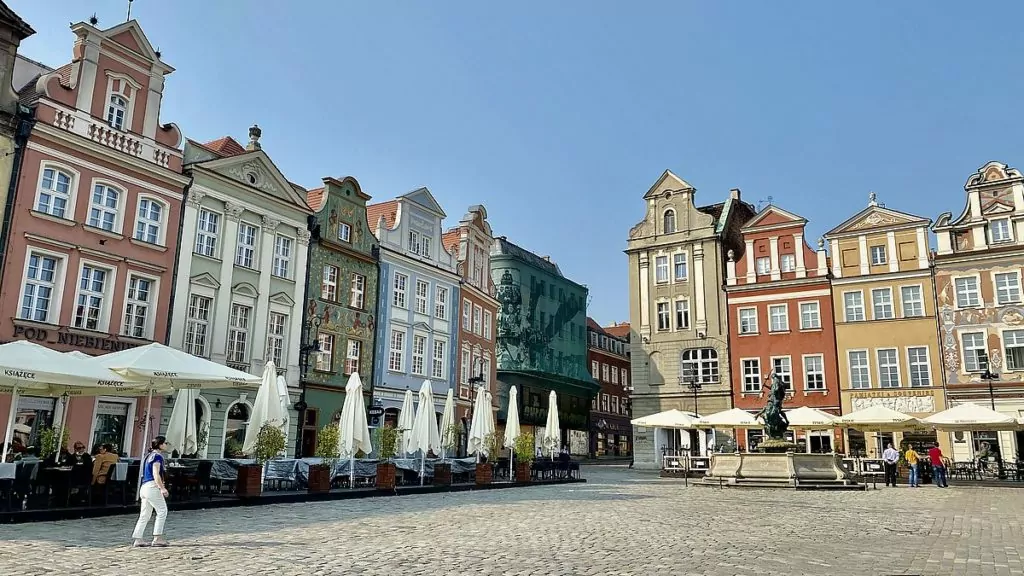
As well as beautiful buildings, there are also several fountains with statues in the square, depicting gods such as Apollo, Neptune and Mars.
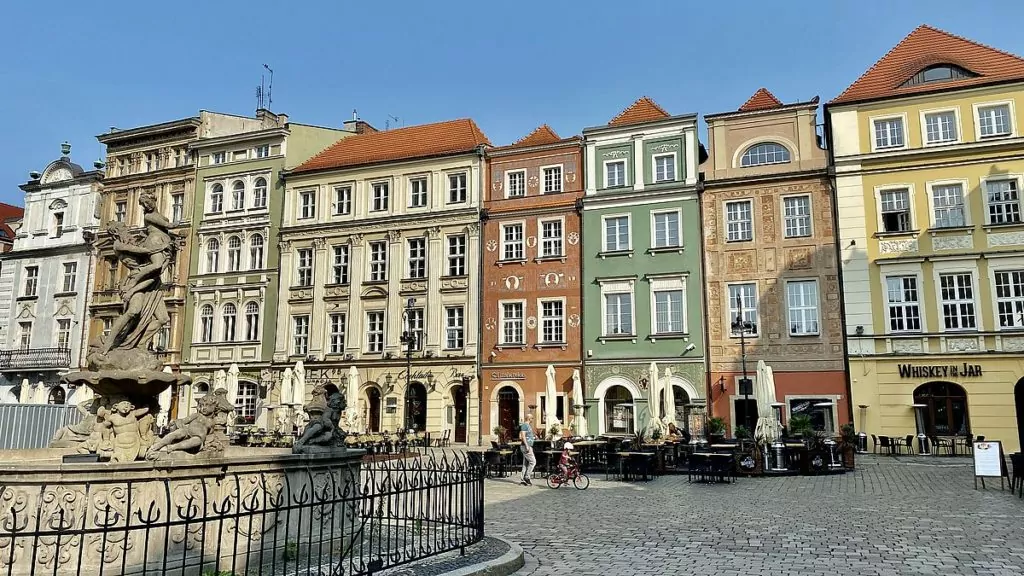
2. Admire the Town Hall in Poznan
The most powerful building in the square has to get its own paragraph, because this 16th century Renaissance building is like something out of a fairy tale. Adorned with arches, paintings, pinnacles and towers, you can really stand here for a long time and be mesmerised. The beautiful building is also home to the Poznan History Museum.
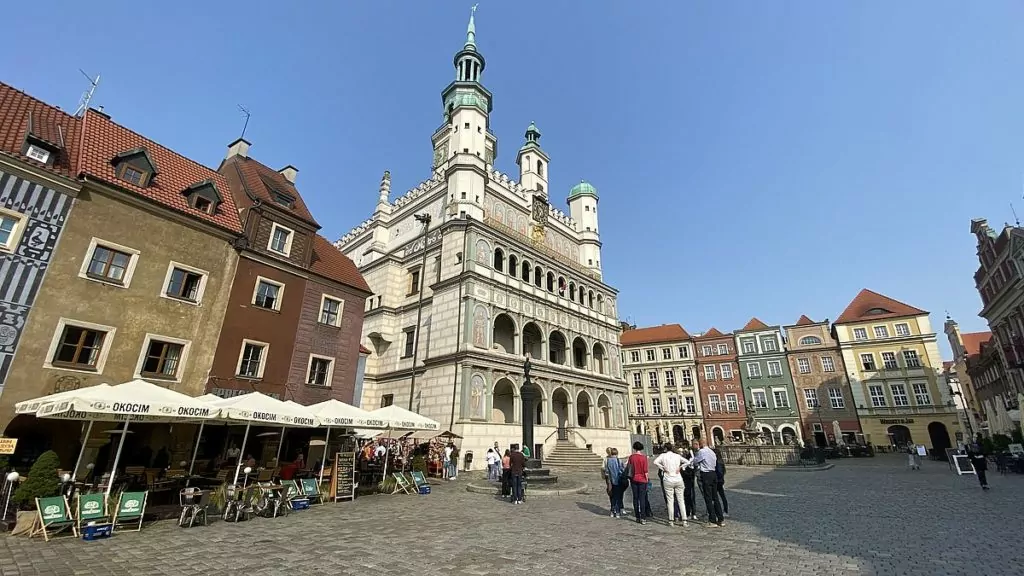
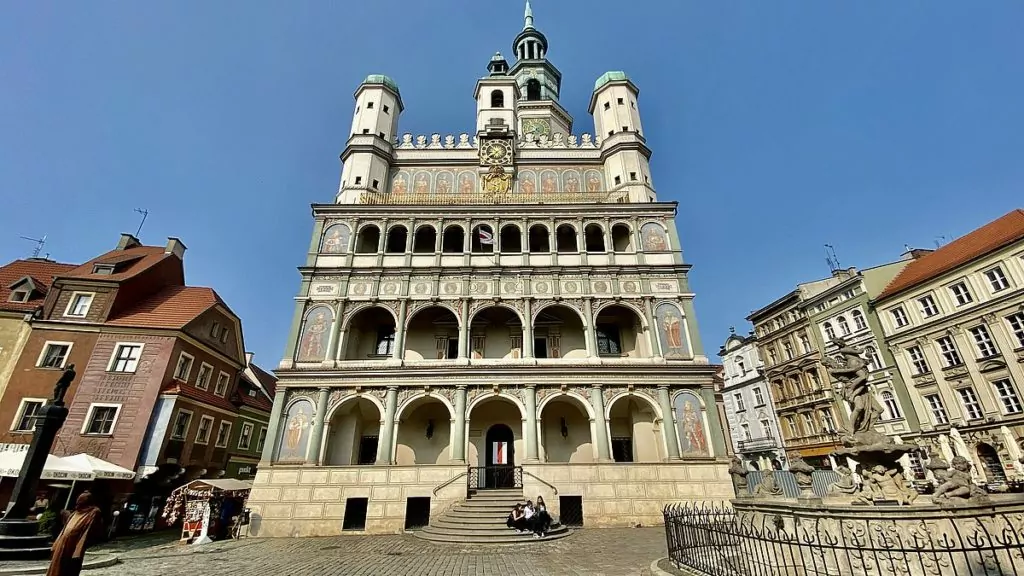
3. Watch the bucks fight on the roof of the Town Hall.
If you make sure to be in front of the Town Hall at 12:00 noon, you can see two bucks emerge from the roof and clash with each other a total of 12 times. The bucks are on the Town Hall's tower clock, which was installed in 1551, and watching the twelfth hour is popular with tourists and children in the area. But why, you might ask, are the goats bumping into each other?
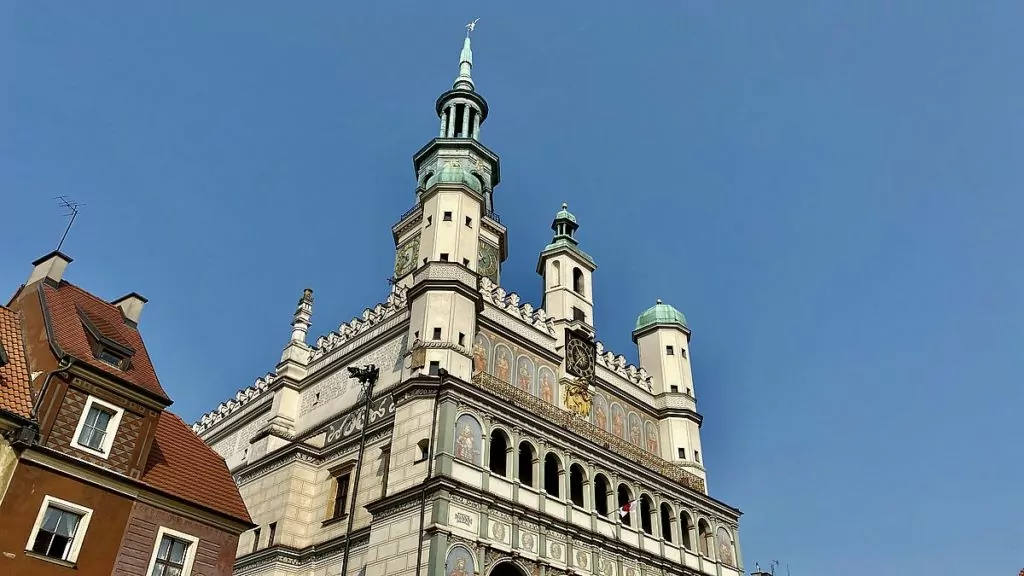
According to legend, a tower clock was built, which when completed would be shown to the town counsellors and the provincial governor. A big party was organised, but unfortunately the cook was a bit careless and accidentally burned the deer fiddle that was to be served at the party. To avoid punishment, he stole two bucks, but the bucks escaped and ran up to the roof of the town hall.
When the guests arrived, they could see two standing bucks on the roof. The provincial governor liked them and ordered the clockmaker to make two of them and mount them on the clock, where they can now be seen every day at 12 o'clock.
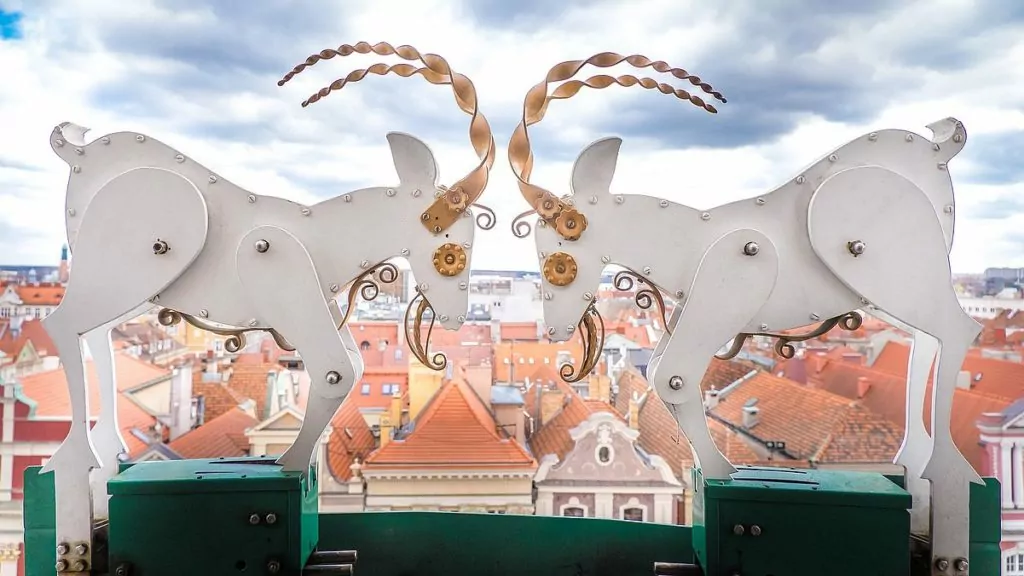
4. Go on a guided tour in Poznan
You can of course stroll around Poznan on your own, which is cosy, but if you want to know a little more about the city's history and secrets, it might be worth taking a guided tour. With the help of a guide, you see things that you otherwise miss. For example, we were alerted to the sign in the ground that showed where the city wall once went ...
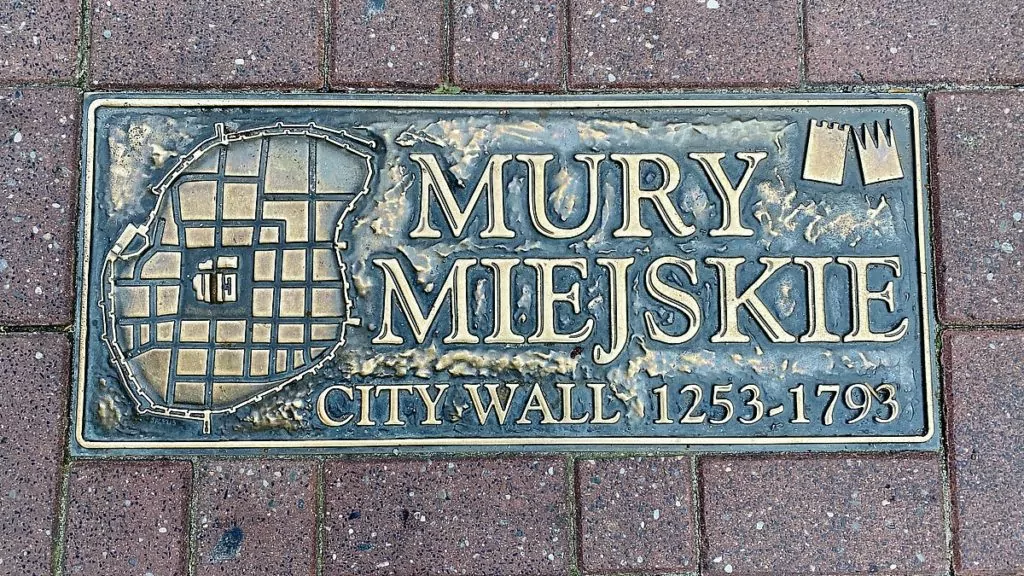
5. Get devout in St Stanislav's church
St Stanislav's Church is said to be one of the most impressive Baroque churches in all of Poland. This beautiful church pops up in an alley in the centre of Poznan and from the moment you see the facade, you are intrigued.
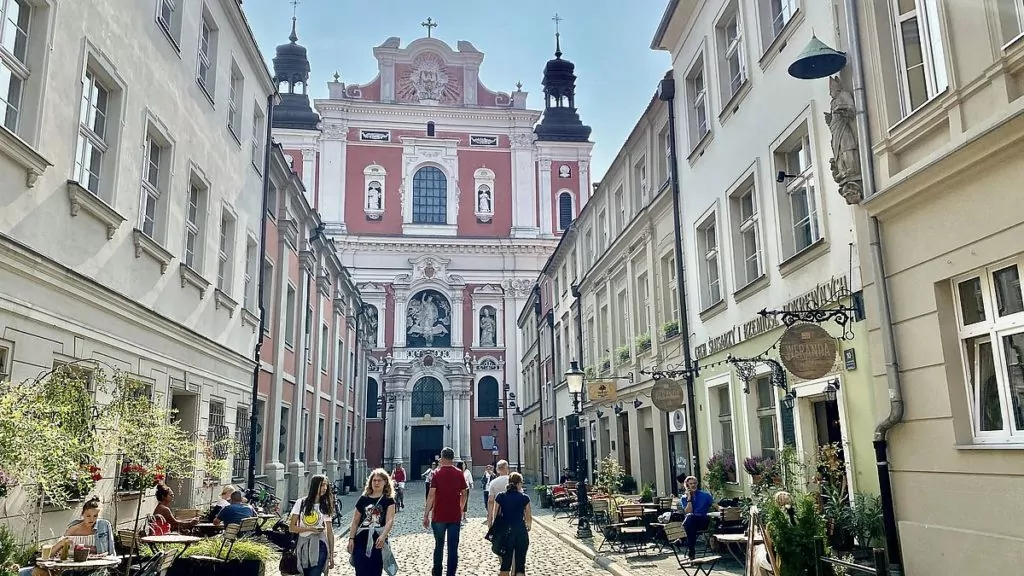
You won't be disappointed when you enter the church either. Built between 1651 and 1701, the church is beautifully decorated. Don't miss a peek at the ceiling!
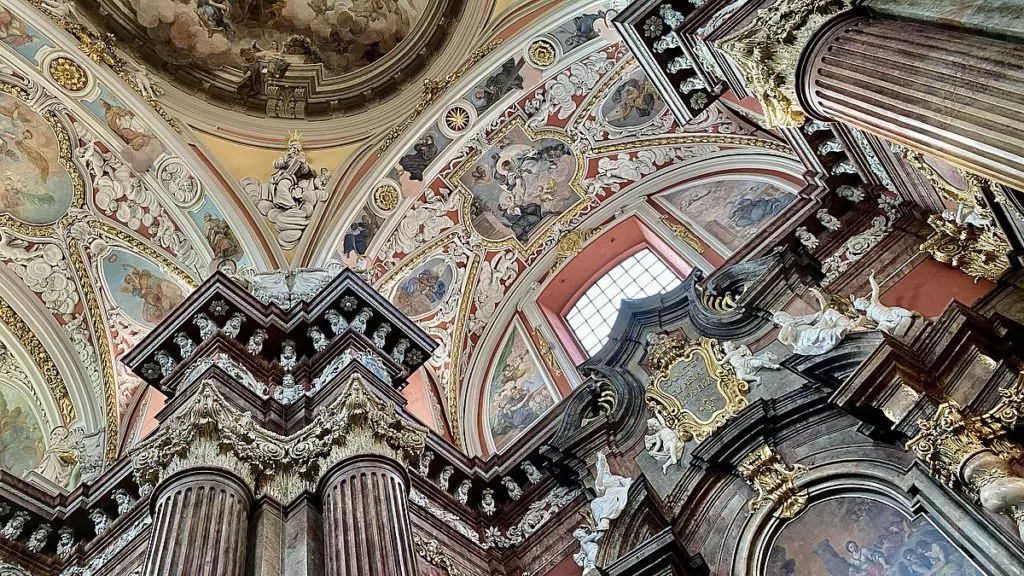
6. Check out exciting (modern) architecture
Poznan is a city full of beautiful historical buildings, but there is also some modern architecture. For example, check out Freedom Square with the Freedom Fountain.
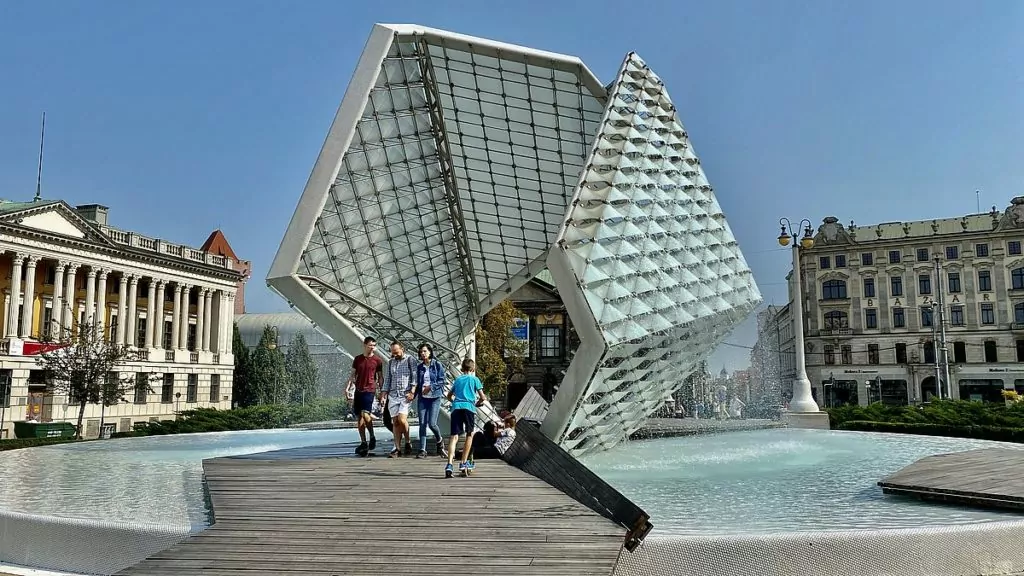
Another interesting building is the 'Rotunda'. This round building is famous in the city and has been home to wild nightclubs, among other things.
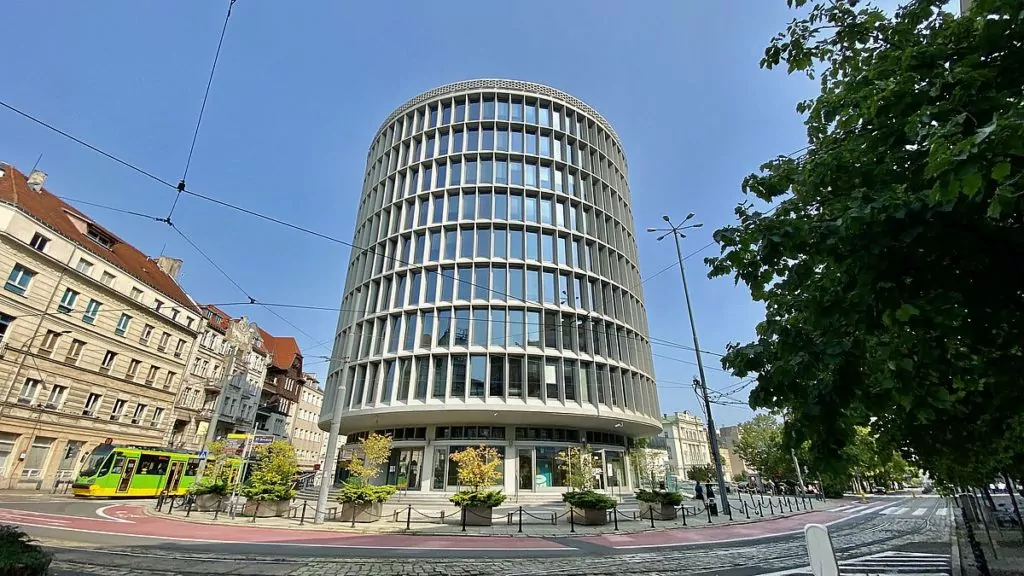
7. Take a look around the Residence Palace
The Residence Palace in Poznan is the youngest of the royal residences in Europe. It was built for Kaiser Wilhelm II in the early 20th century. After World War I, the castle was used instead by the University of Poznan.
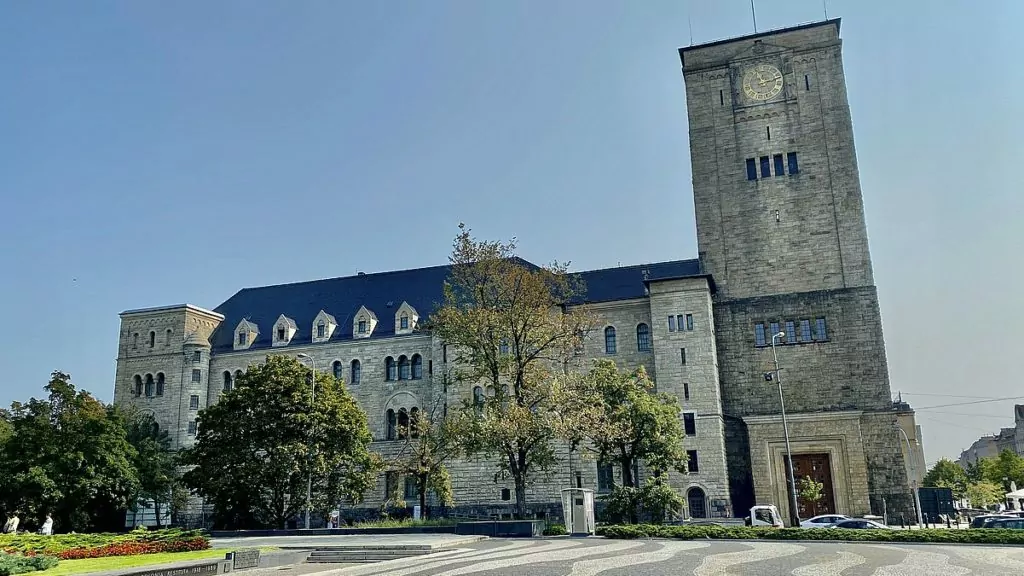
During the Second World War, the castle was completely rebuilt and became one of Adolf Hitler's neighbourhoods.
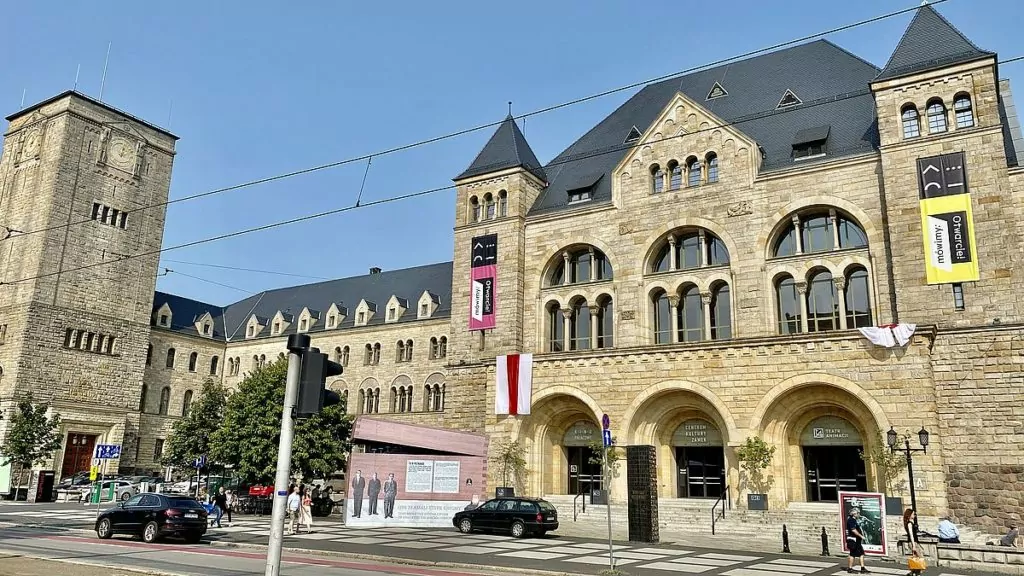
The building is very grand, both inside and out, and you can see how Hitler's regime used different ways to symbolise the new powerful empire. Among other things, you can see the throne of Wilhelm 11, which is also said to have been used by Hitler.
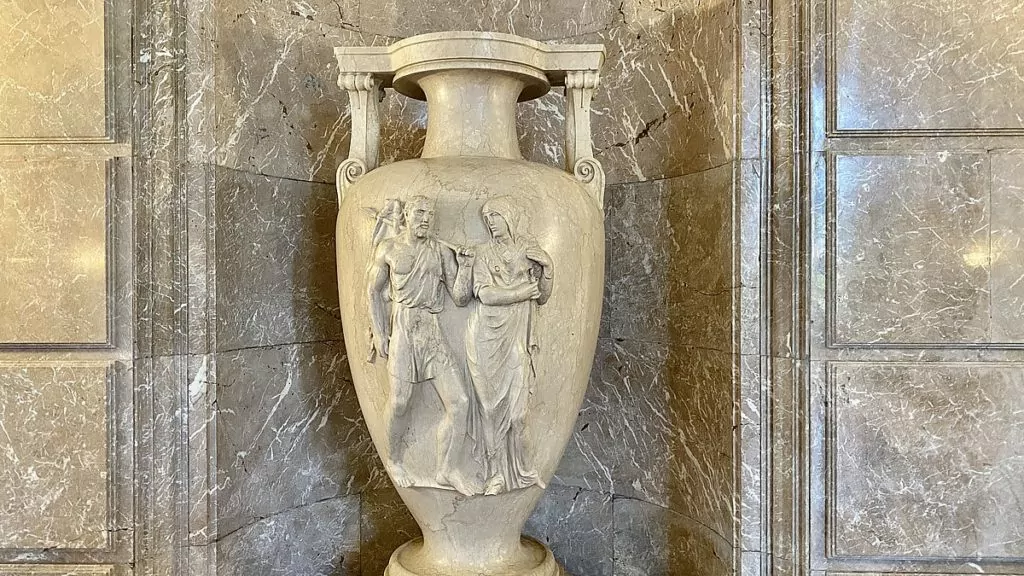
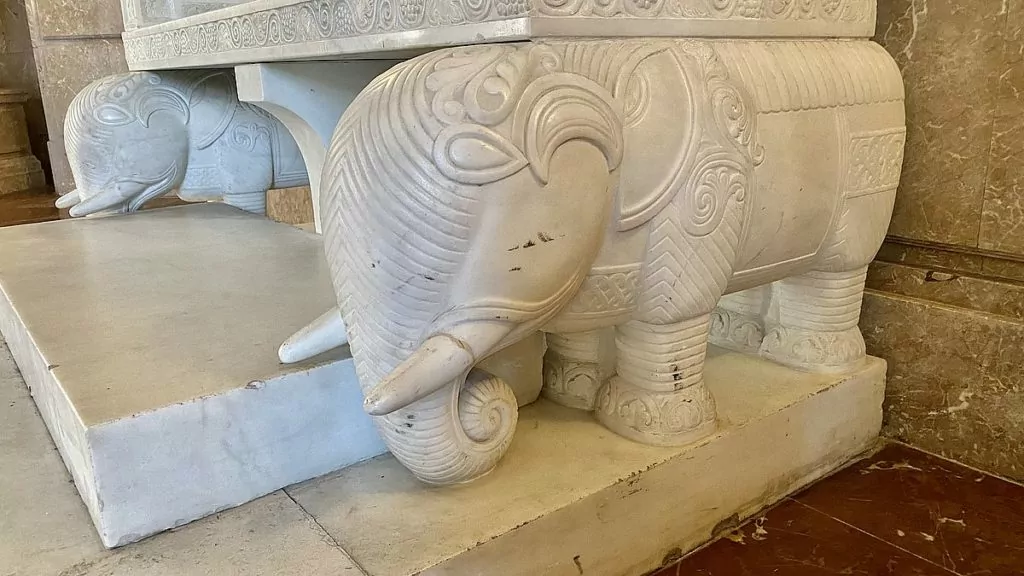
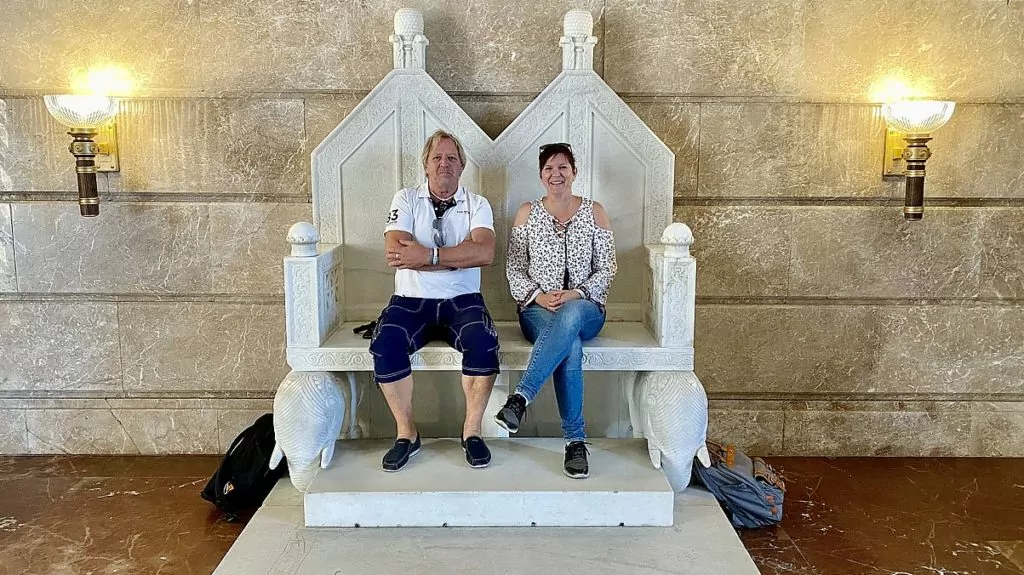
The castle is now open to tourists and for guided tours. The rooms are grand, if in some cases empty of furniture, and a guide is good for bringing the place and its stories to life.
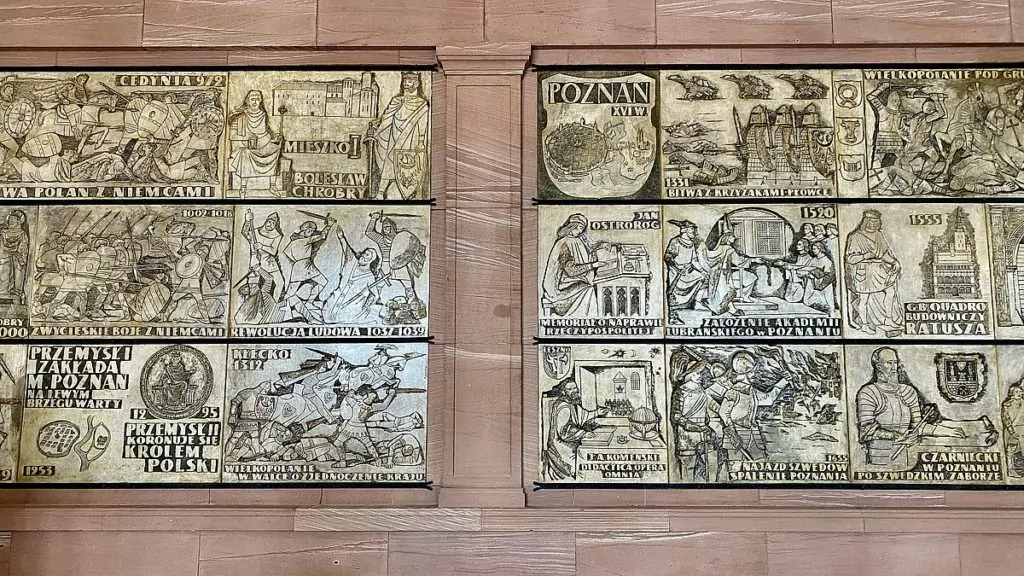
One of the grand balconies overlooks the beautiful garden. There is also a monument commemorating Poles who were once abducted and killed by the Russians.
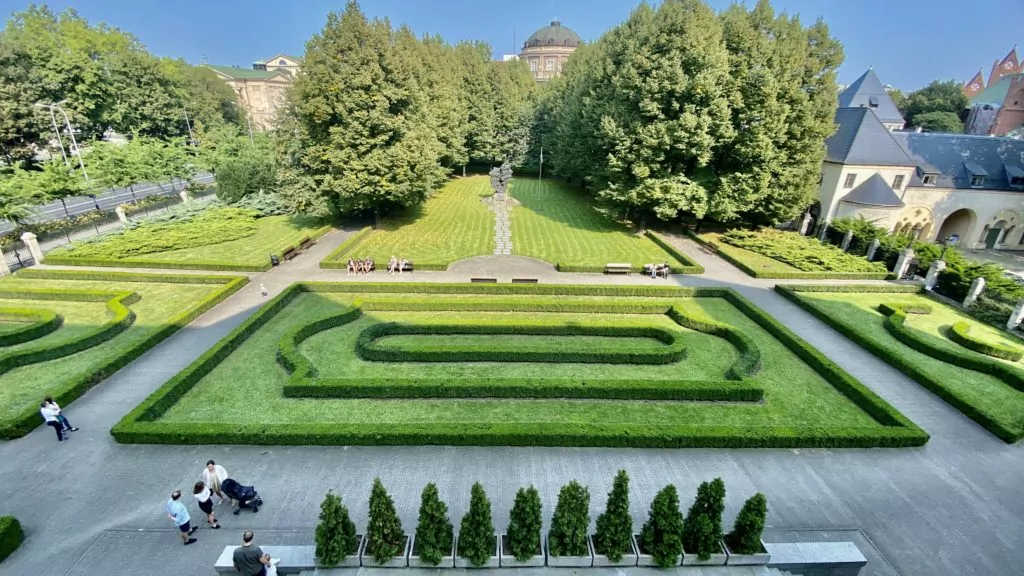
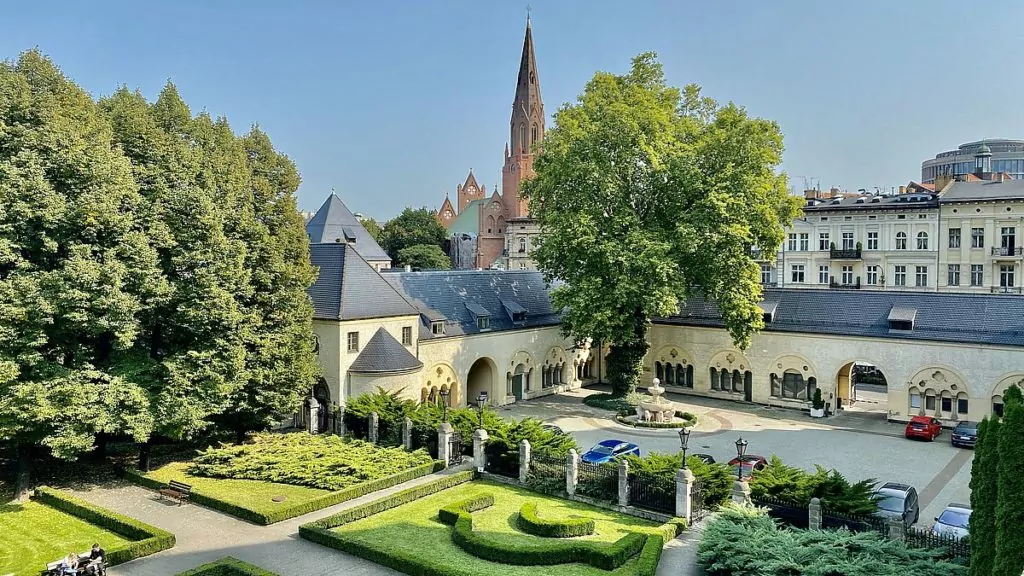
8. Visit the memorial of the "Poznan Revolution"
The Poznan Revolution, also known as the 'June Revolution', was a protest action against the communist government in Poland that took place on 28 June 1956. What started as a strike soon galvanised more and more of the population. The authorities responded with soldiers and tanks, and the result was bloody. Many people lost their lives and many more were injured. Today there is a memorial just next to the Residence Palace.
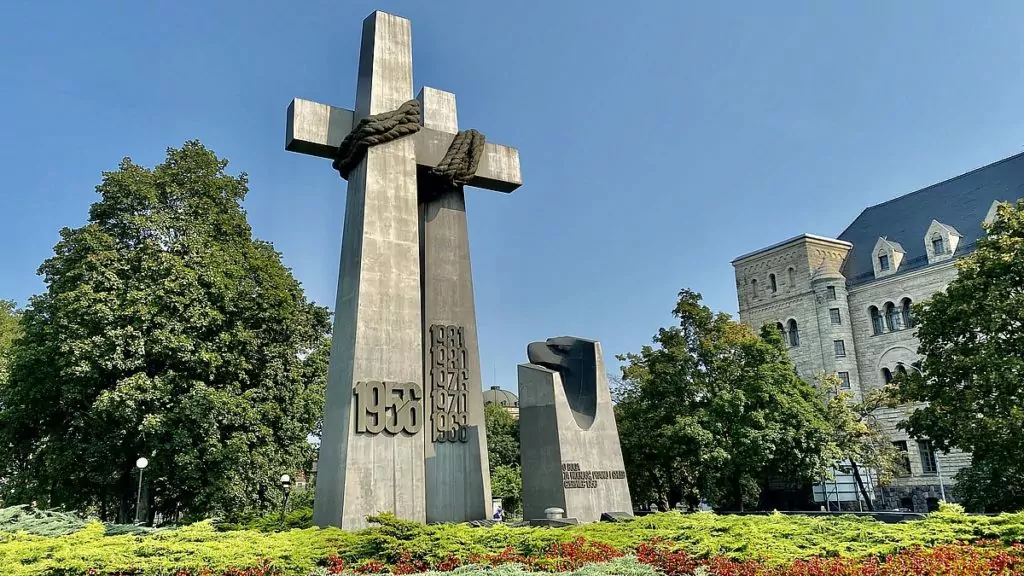
9. Learn how to make St Martin croissants
St Martin's croissants are not just any croissants, but a special variety produced in Poznan, Poland, and a few other places in the same region. The pastry has been protected by the EU since 2008 under the name 'Rogal świętomarciński' and can only be made by specific certified producers in this area. At the Poznan Croissant Museum & Experience you can try it yourself and (in a humorous way) learn more about the history of baking.
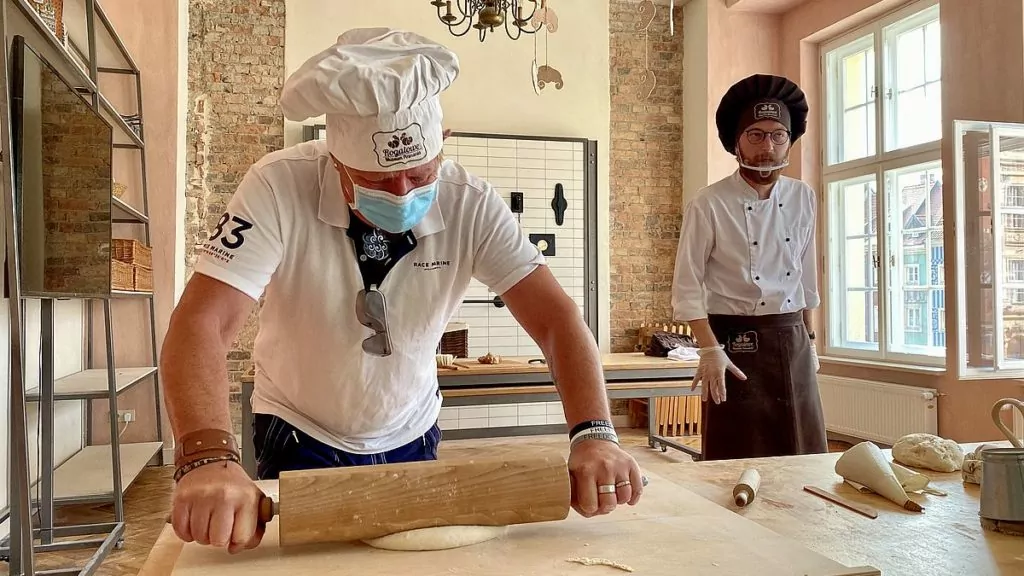
10. Enjoy restaurants and outdoor cafes
As a tourist, you shouldn't forget to have fun and enjoy the atmosphere of a city. Poznan is a beautiful city with a wonderful atmosphere, and if the weather is nice, it is excellent to sit down on one of the many outdoor cafes. We sat down at a restaurant near the Residence Castle, which we unfortunately do not remember the name of. Here it was a really good salad with halloumi, strawberries and nuts, yummy!
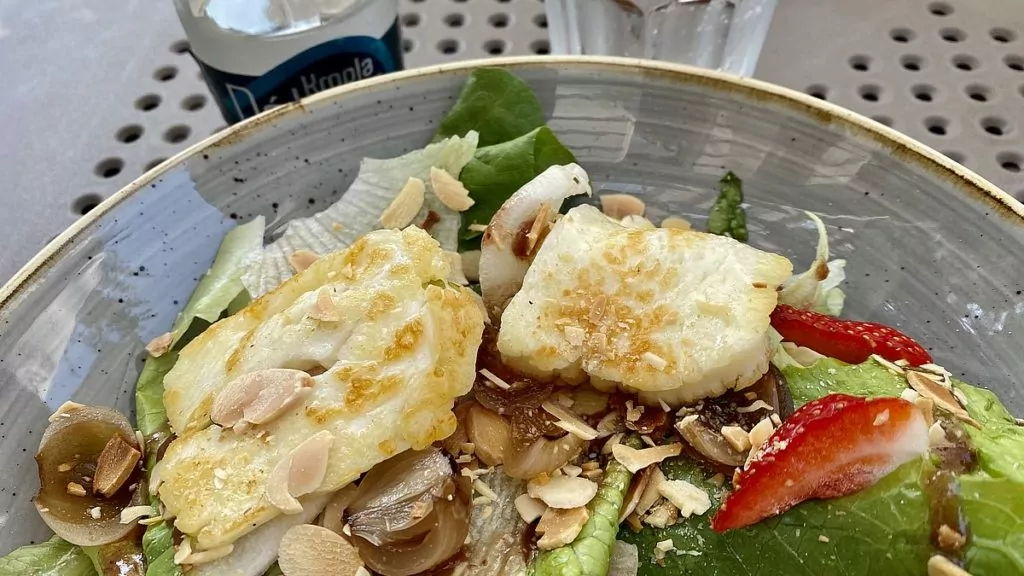
11. go to museums
There are a number of museums in Poznan that are worth visiting. We only visited the Poznan Croissant Museum & Experience, which is more of a workshop and experience than a traditional museum. Other museums include the National Museum, Archaeological Museum, Musical Instrument Museum, Porta Posnania, Lech Tourist Centre and Poznan City Museum.
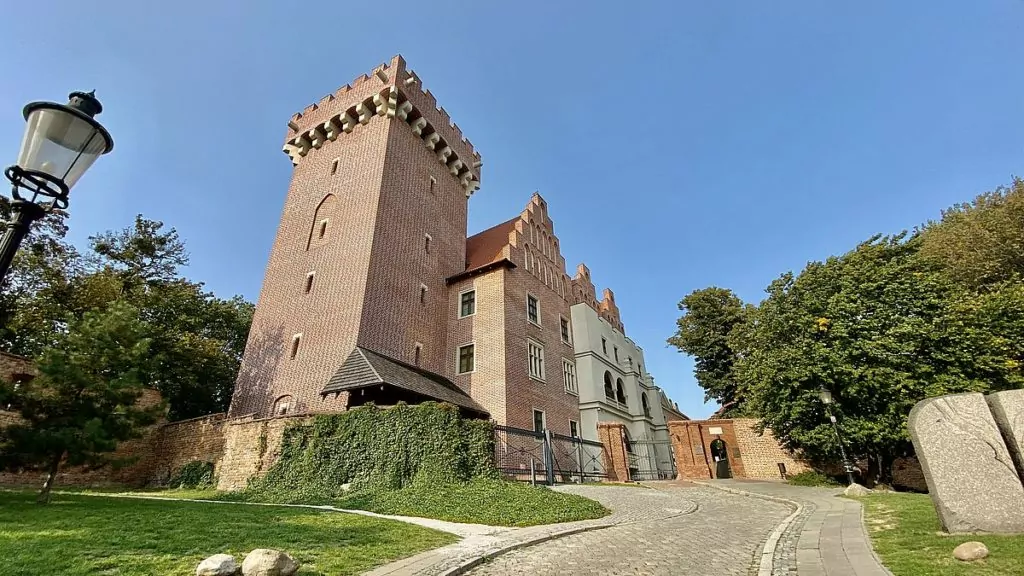
More to see and do in Poznan
There is of course much more to see and do in Poznan. Here are a few more suggestions, which we didn't have time to do ourselves but will have to save for another time:
- The "Maltanka" park train
- "Det Gamla Bryggeriet", which today offers shops, art centres and more.
- Cathedral Island
- Citadel Park
- Gorka Palace
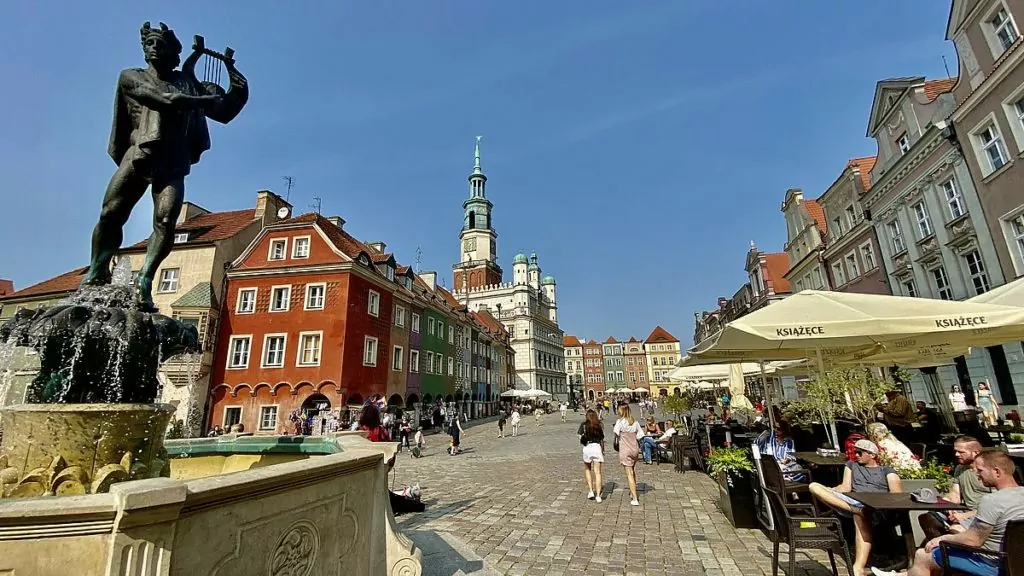
Things to do in Poznan - on film
Where to stay in Poznan?
There are of course plenty of hotels in Poznan, but we travelled here with a camper van so we don't have a good idea of hotels. If you want to stay at a campsite, you can find Camping Malta nearby. This time we chose to park our camper in a central car park that we found via the app CamperContact, Parking Chwaliszewo.
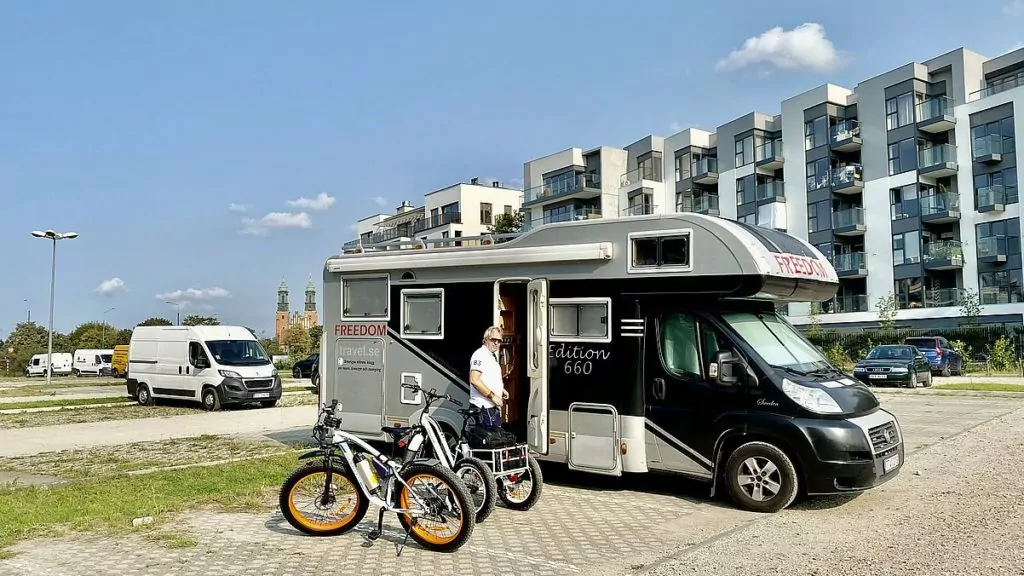
More to do in Poland
There is of course much more to see and do around Poland. You'll find plenty of reports and tips below.
Lovely holiday in Swinoujscie, Poland
Time for a holiday in Swinoujscie, Poland! Swinoujscie is located on the Baltic Sea coast, near the border...
Christmas market in Warsaw with fabulous decoration
Yesterday we went to the Christmas market in Warsaw. We were not lucky with the weather so to speak....
Gdansk attractions - a great place for a nice trip
Today we present a guest article Eating in Gdansk Travelling is a great way to discover the...
Dziwnow in Poland - a little holiday gem
Dziwnow, in north-eastern Poland, offers a wonderful holiday feeling in the summer. We found our way here more or less...
What to do in Warsaw - our top 13 tips
What to see and do in Warsaw? Poland's capital is perhaps one of Europe's cheapest...
Market in Gdansk dating back to the 13th century
Every year a huge market is organised in Gdansk for everyone in Poland, running up and down the street....
With Polferries to Poland - and a visit to Gdansk
We have embarked on a small road trip, which started with Polferries to Poland, from...
Camping Stogi in Gdansk - on the Polish coastline
Now we have made it to the Stogi campsite in Gdansk. We have been here before, but...
Rewa in Poland - a swimming and surfing paradise
Rewa is located on the Polish coast, not far from the larger city of Gdynia. This is a...
Radegast railway station in Łódź - Holocaust memory
The Radegast train station in Łódź is a historic railway station, known for having been used during World War II for...
Malbork Castle in Poland - a medieval knight's castle
Malbork Castle in Poland is located in the Polish town of the same name. The castle was built by German...
Polish food - specialities of Polish cuisine
Polish food, what is it? Polish cuisine is not often talked about ......
Camping in Poland - how does it work?
We received some questions from a reader about camping in Poland, and were inspired to write...
Maszoperia - nice campsite on the Hel peninsula in Poland
Now we've found a nice campsite on the Hel peninsula in Jastarnia, about halfway out of...
Things to do in Gdynia, Poland - our top 9 tips
What to see and do in Gdynia, Poland? Gdynia offers beautiful sandy beaches, nice...
Luxury hotels in Warsaw - Polonia Palace in Poland
The Polonia Palace in Poland is a 4-star and centrally located luxury hotel in Warsaw with 206 rooms...
Polish roads and camping in the mountains
Now we've travelled from Swinoujscie in northern Poland all the way down to the mountains of...
Baranow Sandomierski - castle in eastern Poland
We have now started the exciting journey eastwards in Poland! From having recently been in...
What to do in Szczecin, Poland - 9 tips
What to see and do in Szczecin, Poland? Szczecin, which can also be called Szczecin,...
Łeba - a mysg holiday favourite in Poland
Poles love Łeba (pronounced Weba), and no wonder. Here you will find long white...
Camping Metropolis in Sopot, Poland
We are at Camping Metropolis in Sopot and have now been joined by Peter's brother ...
Polferries Ystad-Swinoujscie - our experience
What is it like travelling with Polferries Ystad-Swinoujscie? We have recently travelled with the ferry M/F Cracovia...
Unesco World Heritage Sites in Poland - 16 places of interest
Have you seen any of the Unesco World Heritage Sites in Poland? There are currently 16, and...
Gdansk - Nynäshamn with Polferries
Yesterday it was time to leave Poland and head for the ferry. We had to wait a long time in...
Sailing trip through the Oder Lagoon - Szczecin Lagoon
We have experienced a wonderful sailing trip through the Oder Lagoon, located on the border between Germany and Poland,...
Recipe for Zurek - we cook Polish soup
Today's recipe is for zurek, our absolute favourite soup in Poland. I don't think we ever...
Gdansk in Poland - 25 tips for things to do
Gdansk in Poland is, in our opinion, one of the country's finest cities. The Hanseatic city of Gdansk is located on the...
Facts about Poland - 30 things you (might) not know
Writing facts about Poland is really fun. We have travelled a lot in Poland and discovered...
Holidays in Zakopane - on the Tatra Mountains in Poland
Holidays in Zakopane! We have travelled to Zakopane, located in the Tatra Mountains in Poland, south...
The whole peninsula in Poland - Long white paradise beaches
The Hel Peninsula in Poland offers amazing views. This peninsula is a 35-kilometre-long spit of land that...
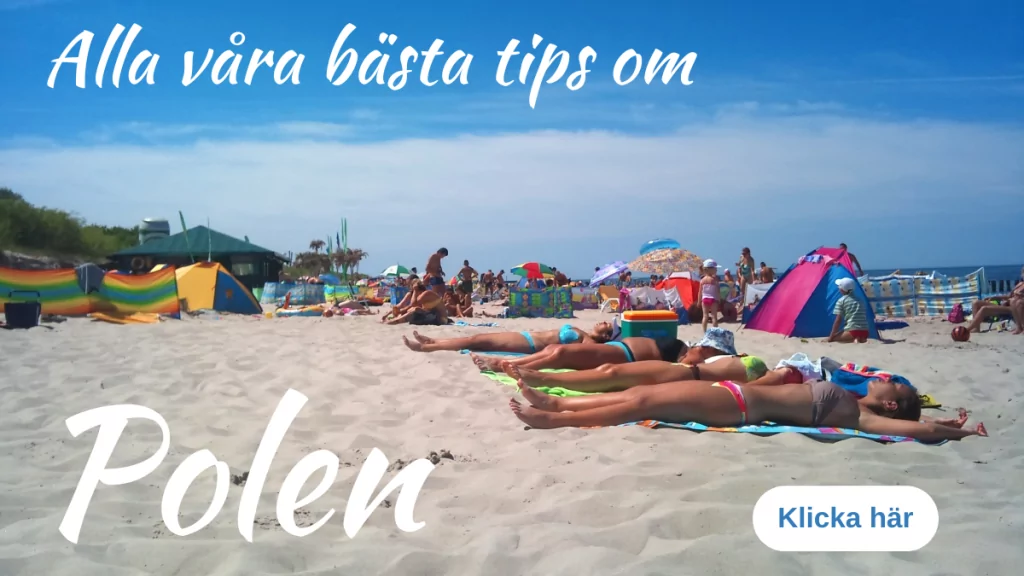
More tips for things to do in Poznan?
Have you been to Poznan, Poland? Perhaps you have more tips?
Facts about Poznan in Poland
- Country: Poland
- Vojvodship: Greater Poland Voivodeship
- Name: Poznań (official name in Polish: Stołeczne Miasto Poznań), in German: Posen and in Latin Posnania. Earlier spellings: Posna or Posnan.
- Location: Poznan is located on the Warta River in western Poland, about 27 miles west of Warsaw.
- River: Warta
- Population: About 584,000 (2020), if you include the extended metropolitan area, the population is between 800,000 and just over a million, depending on how you count,
- University: Adam Mickiewicz University (Uniwersytet im. Adama Mickiewicza w Poznaniu, UAM) is one of the largest universities in Poland.
History of Poznan
- Early history: Mieszko I, the first known Duke of Poland, built a castle in Poznan.
- 968Poznan became the episcopal seat, and later also the capital of Greater Poland. In the second half of the 10th century, the Cathedral of St Peter and St Paul was built.
- 1025: Mieszko I's son Boleslav I was crowned king and the Kingdom of Poland was founded. Both Mieszko I and Boleslav I are buried in Poznan.
13th to 17th century
- 1253: Poznan was founded by German colonists.
- 15th century: Poles moved into Poznan and the city became Polishised.
- 1519: The university Akademia Lubranskiego was founded.
18th and 19th centuries
- 1793: Poznan, the capital of Greater Poland, came under Prussian control.
- 1807: The city became part of the Duchy of Warsaw.
- 1815: Greater Poland was returned to Prussia and Poznan became the capital of the Prussian province of Posen.
20th century
- 1918: Poznan joined the restored Polish state.
- The Second World War: The city was occupied by Nazi Germany. The German garrison surrendered to the Red Army on 23 February 1945 after a month-long siege. The city then became part of the People's Republic of Poland and the remaining Germans were expelled.
- 1956: Poznan became the centre of a major popular protest against the communist government in Poland. The protests, which began on 28 June, developed into demonstrations and riots. The government cracked down on the protests and many were killed and hundreds arrested.

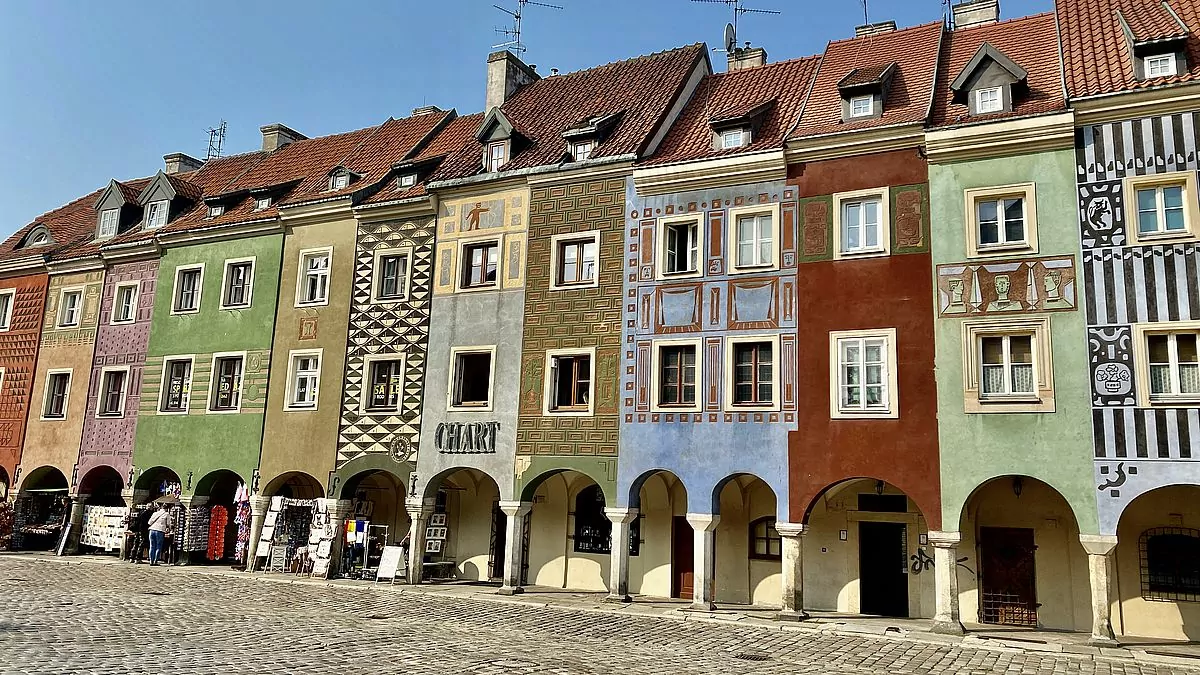











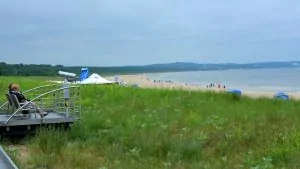
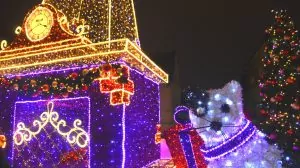
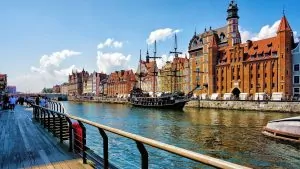
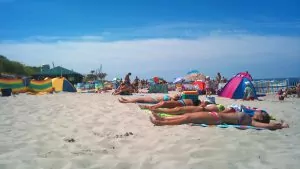
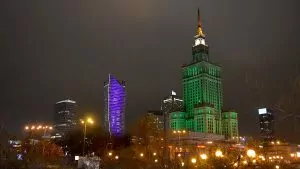
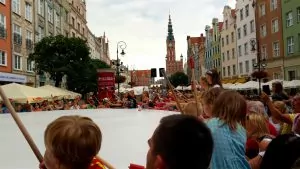
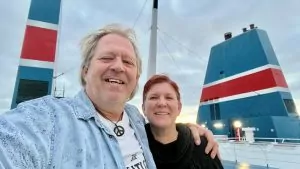
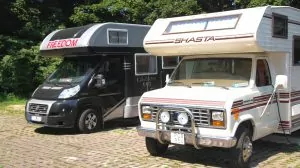
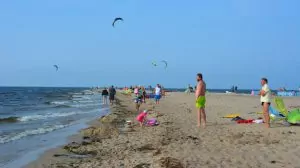
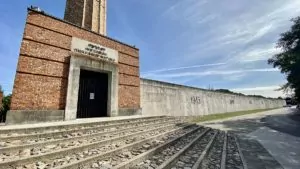
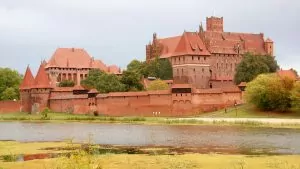
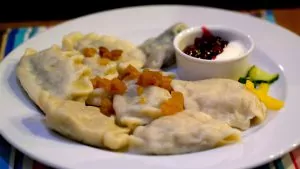
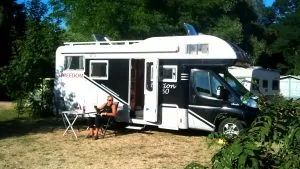
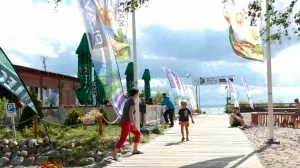
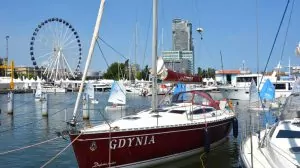
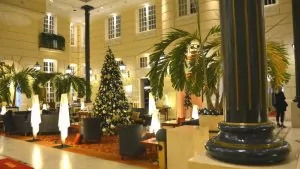
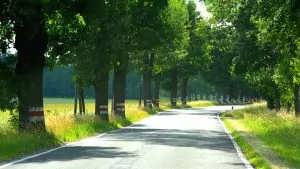
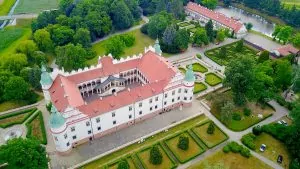
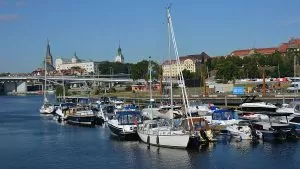
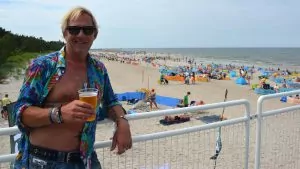
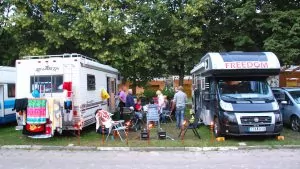
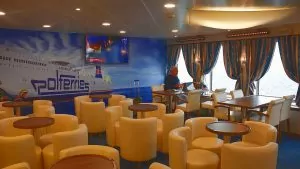
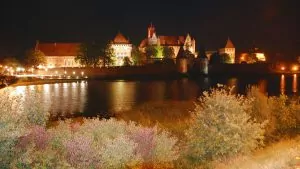
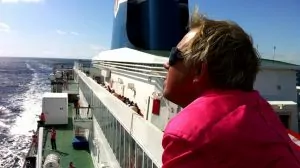
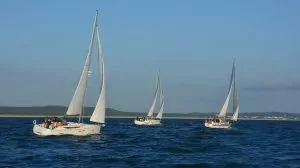
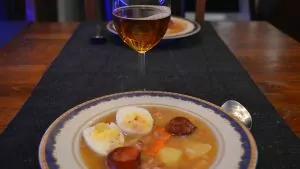
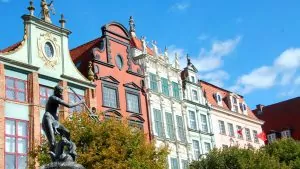
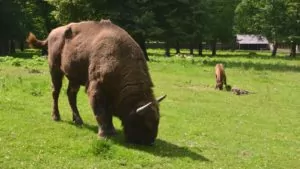
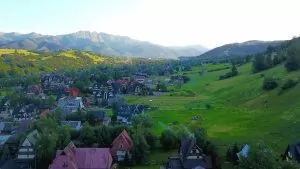
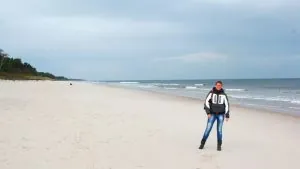
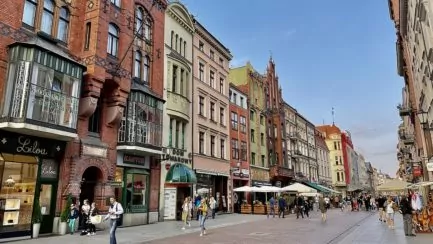
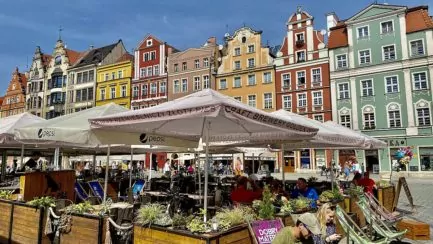
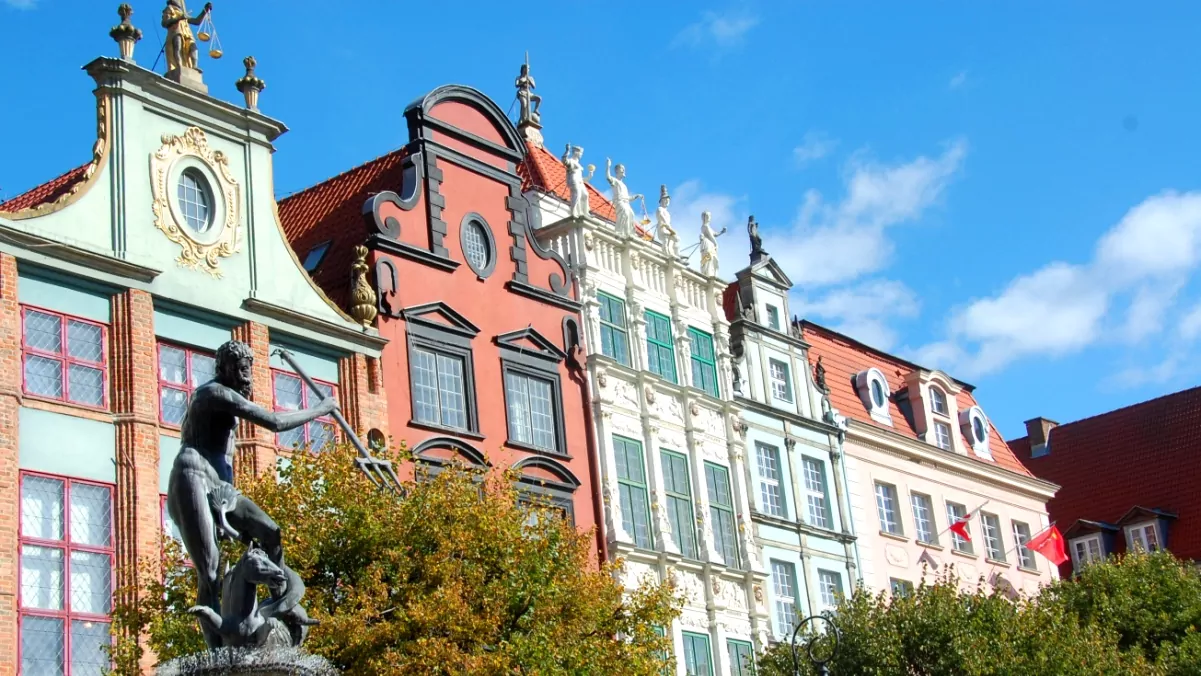
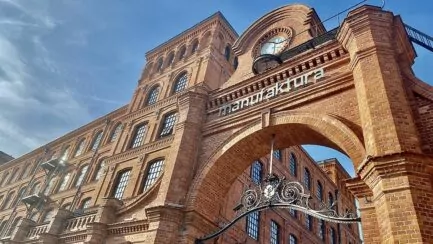
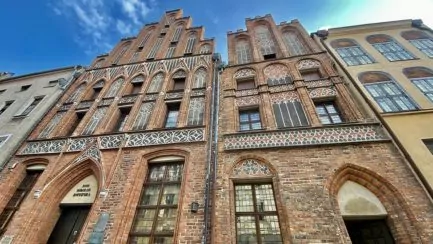
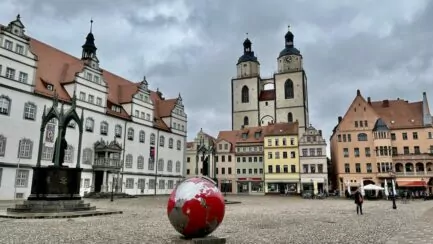



Lena i Wales och Spanien says:
Great report, thank you very much.
Such a beautiful and interesting city.
The first time I heard about the city was when Poland was in crisis and we sent lots of packages of clothes, food and other supplies through an acquaintance who had family in the city.
Have a nice weekend!
26 September 2020 - 10:48
Helena says:
Thank you so much, glad to hear it was appreciated! 🙂 Interesting to hear about your experiences!
27 September 2020 - 13:05
4000mil says:
Christofer was there one day a few years ago and found some other sights. Except for the square then.
https://4000mil.se/index.php/poznan/
26 September 2020 - 15:32
Helena says:
Interesting, thanks for the link, I have read that before, I realise now! Glad that Christoffer found something else! 🙂
27 September 2020 - 13:08
Elisabeth says:
A city that has many beautiful things to see and experience!
26 September 2020 - 16:31
Helena says:
Really! We liked Poznan very much!
27 September 2020 - 13:09
bmlarsreseblogg says:
Although it is 15-20 years since I was in Poznan, I remember the city as just beautiful. A lasting memory, however, is that our hotel was a favourite haunt for the city's scantily clad guards, who did not really like the fact that there were almost 40 Swedish women sitting downstairs in the hotel bar....
A return visit beckons!
26 September 2020 - 17:27
Helena says:
Yes, the city is beautiful! And haha, what a memory! 😉
27 September 2020 - 13:11
Helena - Oh darling, let's be adventurers says:
Poznan looks like a city I would like. Love the colourful buildings!
26 September 2020 - 20:36
Helena says:
Yes, really beautiful in the old town, a fantastic city! 🙂
27 September 2020 - 13:12
BP says:
The Poles are so incredibly good at making replicas of old buildings. They did the same thing in Gdansk after World War II. I think the buildings in Poznan actually beat those in Gdansk.
I like modern architecture, but this is a huge culture clash. The fountain is fine, but the rotunda - well, no.
26 September 2020 - 20:38
Helena says:
Yes agree, really amazing replicas they made in many places! And I probably think just like you. I also liked the fountain actually, but the Rotunda I don't really know 😉.
27 September 2020 - 13:13
Marias Memoarer says:
Poznan is really appealing, especially for the amazing house facades that are like candy for the eyes! 🙂
27 September 2020 - 18:11
Lena - gott för själen says:
That was a really fact-packed post. Lots to do. Such a beautiful square! I have heard of Poznan, but never been there. Not been to Poland at all.
Hug Lena
30 September 2020 - 5:52